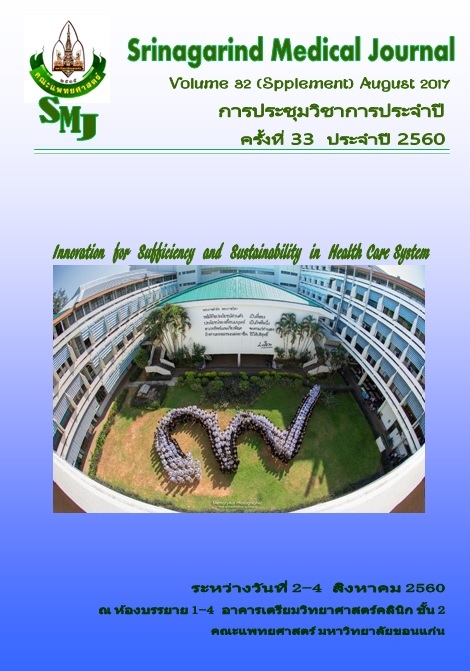Survey Radiation Dose from Chest x-ray Examination in Srinagarind Hospital
Keywords:
Chest x-ray, Entrance surface radiation doseAbstract
Background and Objective: The chest x-ray examination remains the most frequently applied radiological investigation1,2. The knowledge of the radiation dose received by the patient during the radiological examination is essential to prevent risks of exposures. The aimed of this study was to survey entrance surface radiation dose (ESD) from chest x-ray examinations.
Methods: This study was approved by the Khon Kaen University Ethics Committee for Human Research (HE591481). Data were collected from 391 patients with chest x-ray examined in Srinagarind hospital. Before data collection extensive quality control test has been performed to evaluate exposure parameters such as tube peak kilovoltage, milliampere, exposure time accuracy, and reproducibility. Radiographic factors included tube potential are 90 kVp, 320 mA, exposure time between 0.02 to 0.07 seconds, and focus skin distance that were normally used in each radiology room by radiographers for adult patients thickness (between 15-26 centimeter) for only suitable diagnostic quality images as distinct by the radiologist.
Results: The results of this survey were compared with the reference levels of the International Atomic Energy Agency (IAEA) (3). The ESD was measured and calculated based on the exposure parameters used for the actual examination. The mean entrance surface radiation dose for examinations of the chest (PA) was 0.27 mili-Gray (mGy) respectively and IAEA reference levels was 0.33 mGy.
Conclusion: A diagnostic reference level is to help avoid radiation dose to the patient that does not contribute to the clinical purpose of a medical imaging task. The ESDs reported in this study, except for examinations of the chest is generally lower than comparable reference dose values published in the literature.




